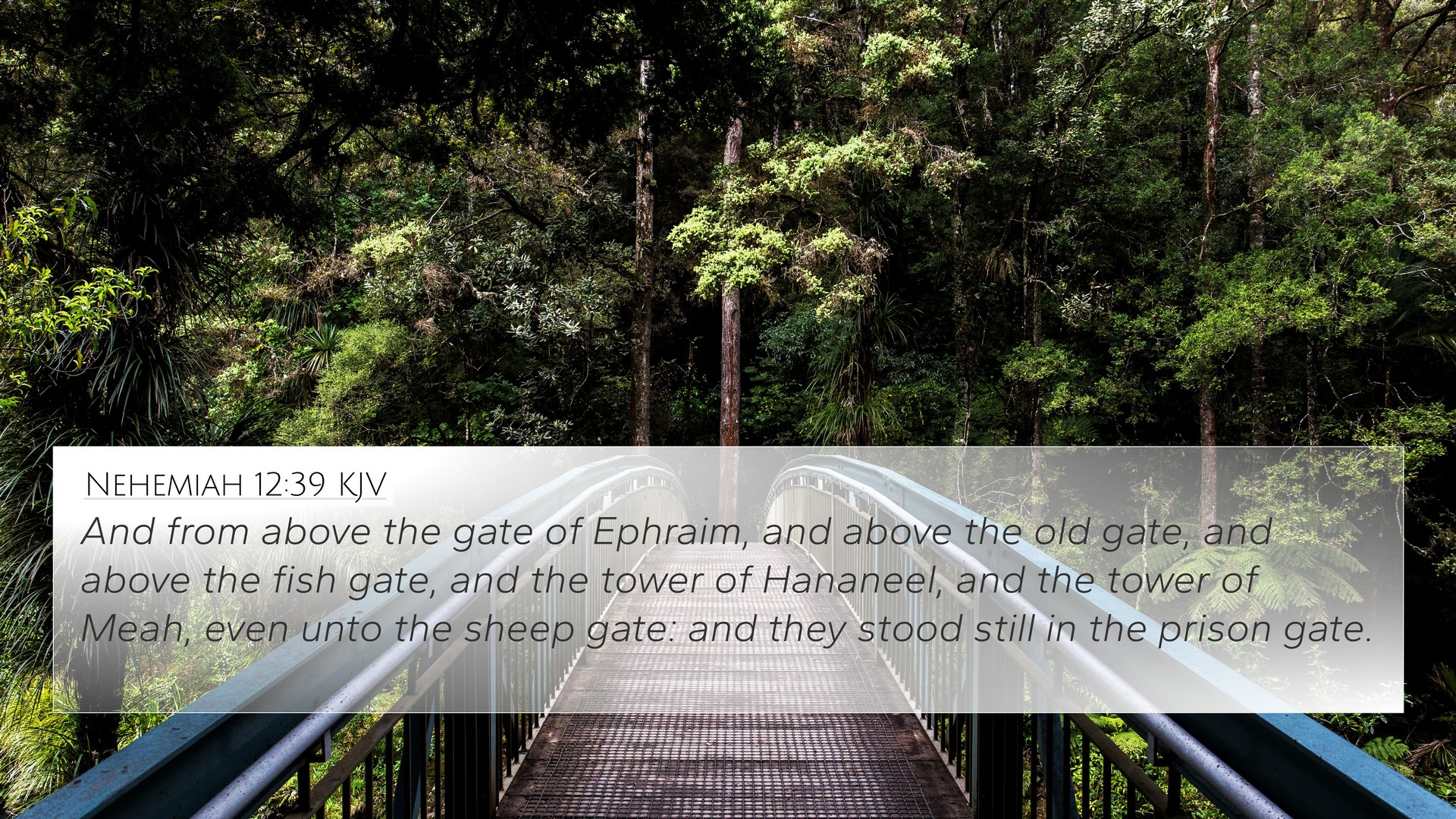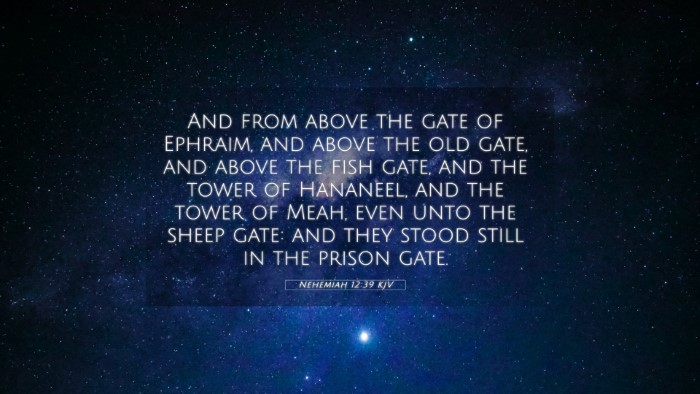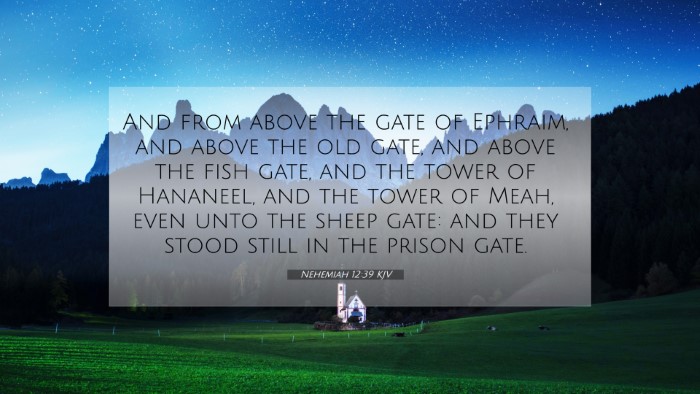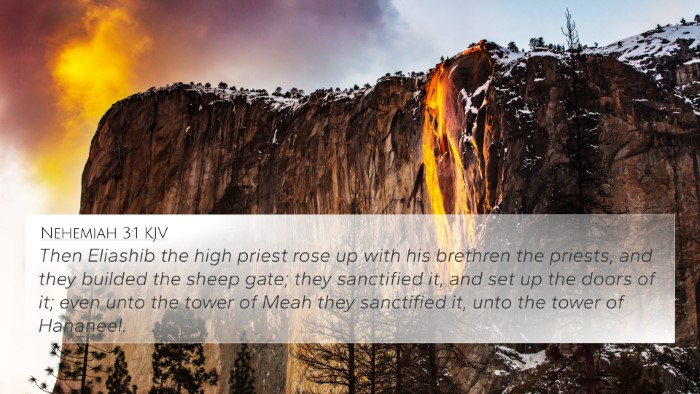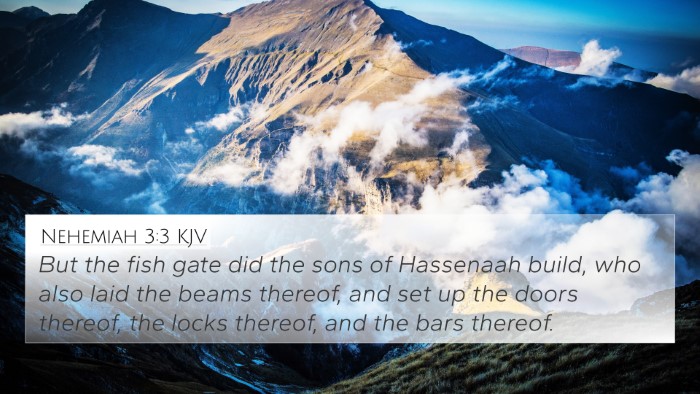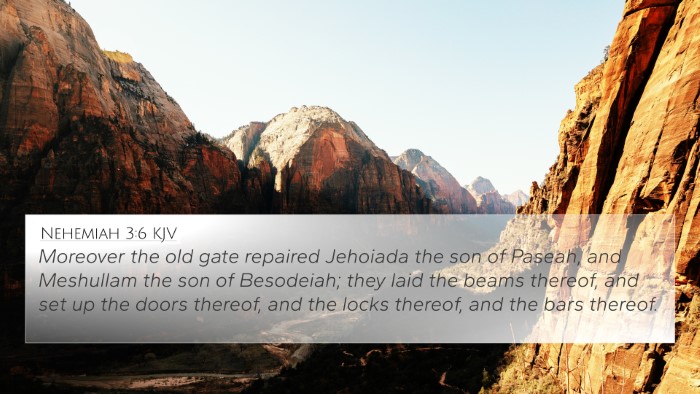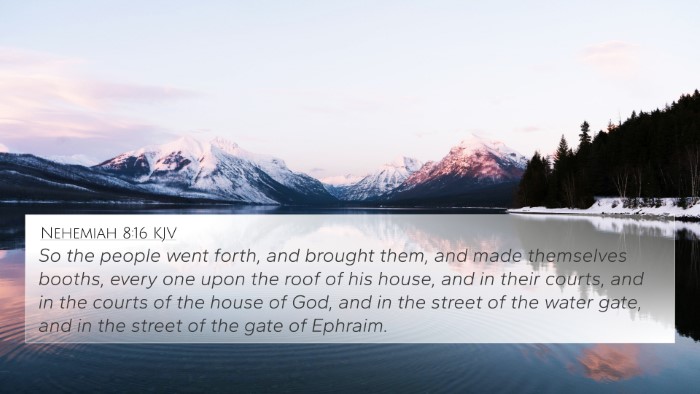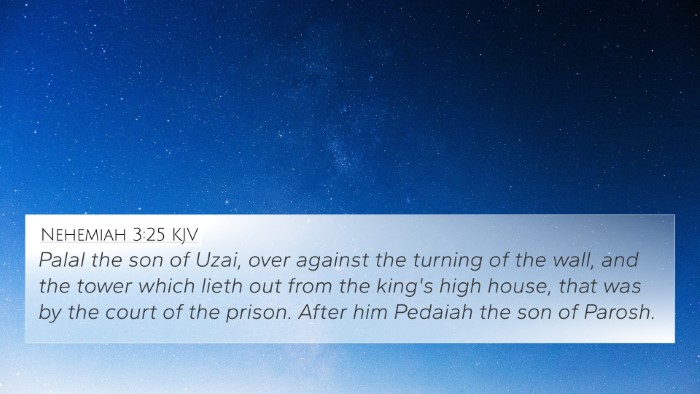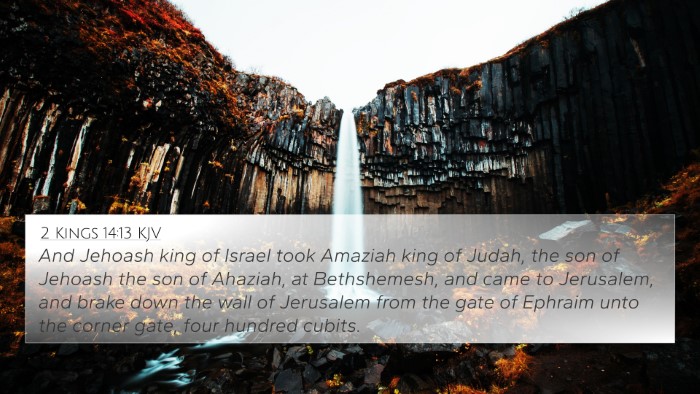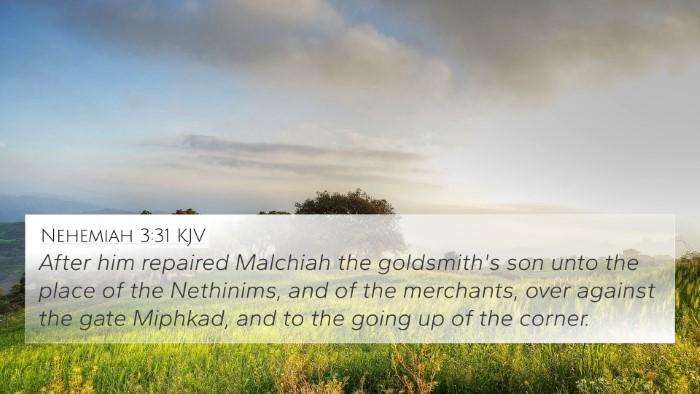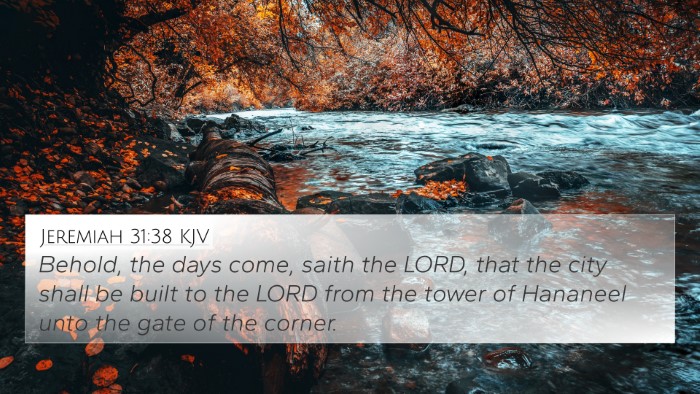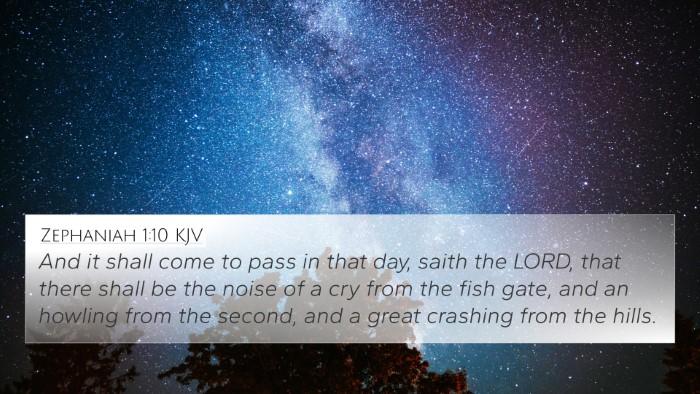Understanding Nehemiah 12:39
Nehemiah 12:39 states:
"And above the gate of Ephraim, and above the old gate, and above the fish gate, and the tower of Hananel, and the tower of Meah, even unto the sheep gate: and they stood still in the prison gate."
This verse provides a vivid account of the services conducted in Jerusalem during the dedication of the wall. It reflects the careful organization and ceremonial elements of the historical context of Nehemiah’s leadership.
Summary of Insights
In analyzing this verse, insights can be drawn from notable public domain commentaries including those of Matthew Henry, Albert Barnes, and Adam Clarke.
- Matthew Henry:
Henry emphasizes the importance of the gates mentioned as significant points of entry into the city that symbolize safety and security. The features of each listed gate represent areas of worship and community life.
- Albert Barnes:
Barnes highlights the construction of these gates as a testament to the restoration of Jerusalem under Nehemiah. The specific mention of gates is indicative of both physical and spiritual restoration following Babylonian captivity.
- Adam Clarke:
Clarke provides a geographical perspective, explaining the strategic locations of the gates in defense against enemies. He also notes that their careful listing evokes a sense of unity and purpose among the people of Israel.
Thematic Connections and Cross-References
This verse opens avenues to explore rich thematic connections throughout the Bible. Here are some cross-references that deepen understanding with respect to Nehemiah 12:39:
- Nehemiah 3:1-32: Details the rebuilding of the wall and gates of Jerusalem.
- Psalm 122:1-3: Expresses a love for Jerusalem, paralleling the reverence shown in Nehemiah's dedication.
- Isaiah 60:18: Speaks of the restoration and peace of Jerusalem, which relates to the themes of rebuilding.
- John 10:9: Jesus declares Himself the gate, linking the spiritual significance of gates with His own role in salvation.
- Revelation 21:12: Describes the New Jerusalem with gates named after the tribes of Israel, connecting past and future promises.
- Matthew 5:14: Highlights the city set on a hill, akin to Jerusalem’s glory restored.
- 2 Chronicles 36:22-23: Discusses the divine call to rebuild Jerusalem, echoing the historical backdrop of Nehemiah.
Importance of Cross-Referencing in Scripture
Cross-referencing Biblical texts helps to illuminate the intricate connections between various scriptures. Understanding Nehemiah's context through cross-referencing can reveal dimensions such as:
- The historical significance of Jerusalem: Recognizing the importance of the city's restoration reinforces God’s faithfulness to His covenant.
- Spiritual implications: Drawing parallels between physical gates and spiritual truths about protection and entrance to salvation enhances one's spiritual understanding.
- Thematic unity: Identifying connections between the Old and New Testaments allows for a broader understanding of God's redemptive plan.
Conclusion
Nehemiah 12:39 serves as a powerful reminder of the importance of community, worship, and restoration both historically and spiritually. Through the insights of public domain commentaries and a careful study of cross-references, we can grasp the depth of its meaning and its relevance in our faith today.
Using tools like a Bible concordance or a Bible cross-reference guide can greatly enhance your study. Understanding how to identify connections between verses is critical for anyone seeking deeper theological comprehension.
